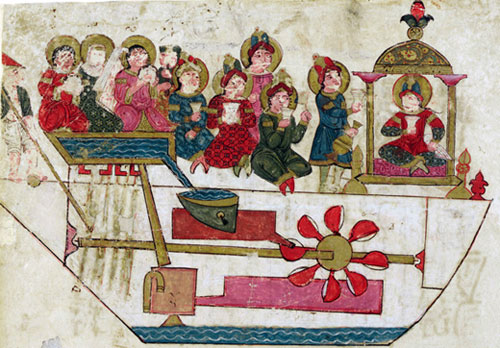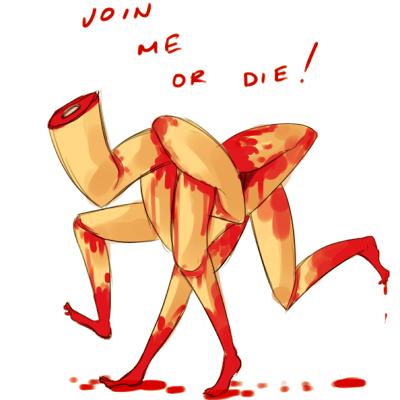From Thief Town to the Seventh Pillar
In a molten sphere in the center of the earth resides the dwarfish deity, the Most Low God. He is circled by six concentric tunnels that stretch the circumference of the earth. An enormous stone cylinder moves through each of these tunnels, rotating around the Most Low God. These hollow cylinders are called the Pillars, and the Dwarves make their cities inside them.*
The Dwarves judge time by the rotation of these pillars. Once every cycle the pillars align perfectly, and it is possible to walk straight from the first pillar to the last. It's a time of celebration, but also of judgement. Each dwarf is evaluated on their actions from the past cycle, and moved up or down the pillars based on their merit. Within each pillar, Dwarves are strictly ranked - come the Alignment, the kings of the upper pillars descend to become to beggars of the pillars below.
The Dwarves judge time by the rotation of these pillars. Once every cycle the pillars align perfectly, and it is possible to walk straight from the first pillar to the last. It's a time of celebration, but also of judgement. Each dwarf is evaluated on their actions from the past cycle, and moved up or down the pillars based on their merit. Within each pillar, Dwarves are strictly ranked - come the Alignment, the kings of the upper pillars descend to become to beggars of the pillars below.
Sixth Pillar
"Sa’ah". Destroyed long ago. The only remains are the giant tunnel that once housed it, and the ruins under the bog of thief town. The thieves have stripped most of the treasure clean, but there's a ruined dwarf-house that still stands in the darkness just beyond thief town, guarded by some kind of tentacled barnacles.
There is an intact passage under the throne of the thief king that leads down to the lower pillar.
There is an intact passage under the throne of the thief king that leads down to the lower pillar.
Fifth Pillar
"Hatma", a great bazaar where the majority of dwarvish peasants live, work and trade. All dwarf children live here in great, squabbling orphanages.
Fourth Pillar
"Nati", the great furnace. This is the heart of dwarvish industry, a constant heat of blacksmithing and building. Through some curious process, they are able to use fires without producing smoke.
Third Pillar
"Saqar", the perfumed garden. All dwarven women reside here until they are ready to be married, tending the vast subterranean garden that feeds all Dwarves. Dwarfmaidens are said to be so beautiful that glimpsing even an inch of their flesh unprepared would kill a man instantly, so they must wear full black robes while away from the third pillar. They reveal themselves to their lovers inch by inch over a period of months, until they can view them entirely without being destroyed.**
The pillar holds troops of إنسان آلي, automated men which work for the comfort and protection of the ladies. These machines are ingeniously designed to pour tea, offer towels and water for hand-washing, or play short pieces of music. There are also scattered monasteries, where those chosen to

Second Pillar
"Jahim", the pillar of Glory, city of the dwarf kings. The greatest of the dwarves reside here, raised to the second pillar by the judgement of the Most Low God. These are typically the greatest philosophers, scientists, leaders and priests of the age, along with those judged worthy enough to serve them.
The workshop of Al-jazari is here, where he works on the most beautiful and terrible of his automated war machines.[1][2] So too is the head church of the Dwarf Pope, known as the First Eye of the Most Low God, who sits in judgement of the deeds of each dwarf. Below him are the Million eyes, priest spies said to infest each pillar and report on the actions of every dwarf.
The workshop of Al-jazari is here, where he works on the most beautiful and terrible of his automated war machines.[1][2] So too is the head church of the Dwarf Pope, known as the First Eye of the Most Low God, who sits in judgement of the deeds of each dwarf. Below him are the Million eyes, priest spies said to infest each pillar and report on the actions of every dwarf.

One of the most fearsome of Al-jazari's mechanical war beasts.
First pillar
"Hawia", the pillar of Faith. A vast labyrinth that holds the seven monstrous children of the Most Low God, along with their jinn servants. All dwarves must make a pilgrimage here at some point in their lives, to worship at the feet of one of these so-called Angels.
1. Lolth, the spider queen. Her servants are the Drow.
2. Gloria of the glass, a transparent maiden who can manipulate minds and memories. Her servants are the Shards. They carry glass books, which can absorb minds to be fed to their mistress.
3. Bahamut, an enormous fish with an elephant head, said to hold up the world. He has no servants.
4. Al-Qaum, a pillar of blood with three faces embedded within it. These faces change to become the mother, father, and eldest child of whoever views it. His servants are the skinless children.
5. Almaqah, an enormous penis made of vaginas. The dwarves have sworn this isn't a joke. It's servants are some kind of women with bellies that distend, wormlike, opening onto rows of teeth.
6. Malakbel, a collection of 700 golden masks grouped into a hoovering sphere. Each mask whispers secrets constantly. Her servants are headless men.
7. الحصان الساق, lit. "Leg horse".
1. Lolth, the spider queen. Her servants are the Drow.
2. Gloria of the glass, a transparent maiden who can manipulate minds and memories. Her servants are the Shards. They carry glass books, which can absorb minds to be fed to their mistress.
3. Bahamut, an enormous fish with an elephant head, said to hold up the world. He has no servants.
4. Al-Qaum, a pillar of blood with three faces embedded within it. These faces change to become the mother, father, and eldest child of whoever views it. His servants are the skinless children.
5. Almaqah, an enormous penis made of vaginas. The dwarves have sworn this isn't a joke. It's servants are some kind of women with bellies that distend, wormlike, opening onto rows of teeth.
6. Malakbel, a collection of 700 golden masks grouped into a hoovering sphere. Each mask whispers secrets constantly. Her servants are headless men.
7. الحصان الساق, lit. "Leg horse".
Seventh Pillar
Jahannam, what we call the outside world. The Dwarves believe that our surface world is actually another pillar, enormous, but still underground. The stars and sun are merely holes in the roof of the pillar, where sunlight shines through from the true above ground. In that realm above sits the Most High God, the source of all evil.
As the farthest pillar from the Most Low God, the Dwarves consider us the most evil. The Dwarves that live here are the damned, outcast from every other pillar and forced to walk under the rays of the Most High God.
*I have written this story as it was told to me by the Dwarves, but the distinguished reader will be able to see the holes in it themselves. As Bomgumblewitz is the only true god, this Most Low God cannot exist, and the lower pillars of Dwarfland are doubtless empty.
**The dwarves describe their women as "like precious gems and pearls in their splendor, their clarity, their purity, and their whiteness." They have full black eyes, and blinding white skin, "so delicate and bright... that you can see through to the bone marrow on the delicate flesh of their legs."[1] Obviously this does not match with the Dwarfmaidens we see above ground. The dwarf men explain that this true state slowly fades as a woman spends time away from the Garden, which is why all women must gather at the third pillar once every cycle.


No comments:
Post a Comment